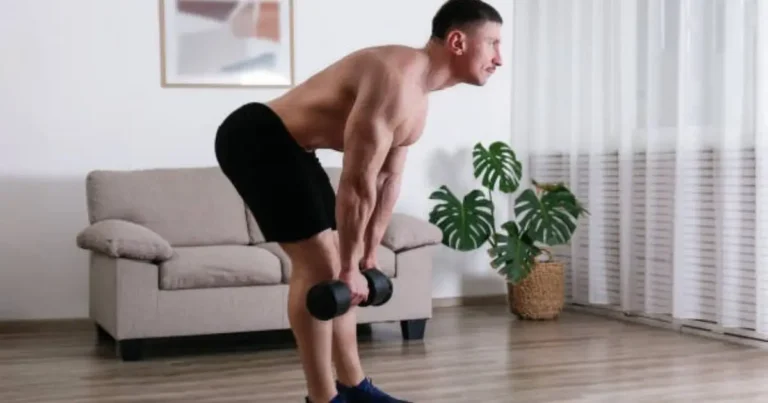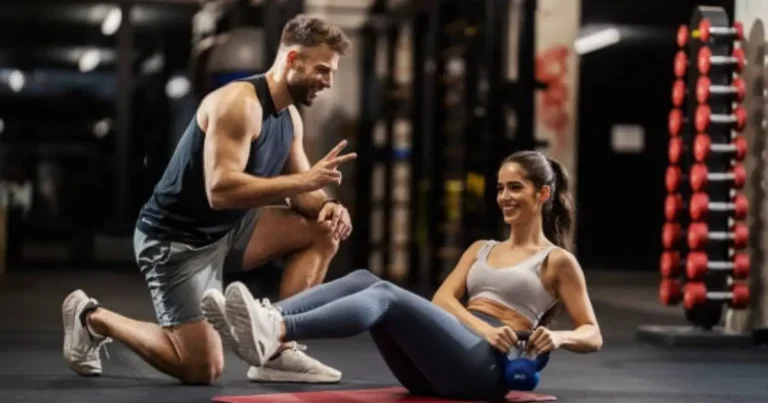The Ultimate Guide to Ab Pull-Up Bar Workouts
Introduction
Sculpt a Strong Core with Just a Pull‑Up Bar: No Gym Required!
If you’ve ever wondered what are the best ab exercises you can do on a pull‑up bar, you’re in the right place. Ab pull up bar workouts offer an unbeatable combination of core activation, grip strength development, and full‑body engagement. In this guide, you’ll discover everything from beginner‑friendly moves (Related Keyword 1) to advanced variations (Related Keyword 2), complete with step‑by‑step instructions, safety tips, and sample routines. Let’s dive in!
Table of Contents
Why Pull‑Up Bars Are Great for Abs
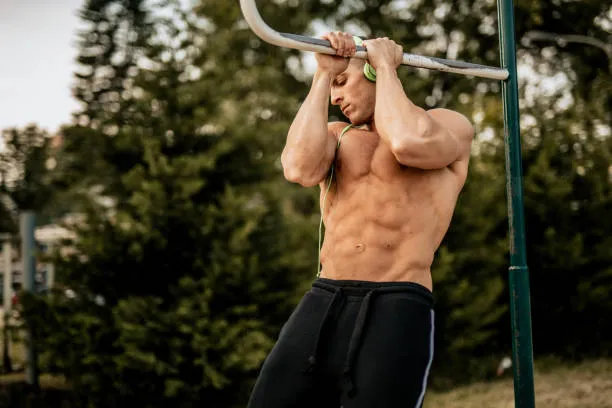
- Increased Core Activation: Hanging from a bar forces your abs to stabilize your pelvis and spine, hitting the rectus abdominis, obliques, and transverse abdominis more effectively than floor exercises.
- Improved Grip Strength: Every rep challenges your forearms and grip, which translates to stronger holds in other lifts and daily tasks.
- Versatility & Convenience: Doorway, wall‑mounted, or freestanding—there’s a pull‑up bar for every space and budget.
- Better Than Crunches?: Unlike static crunches or planks, hanging movements recruit multiple muscle groups and build functional strength.
Core Anatomy Primer:
| Muscle | Location | Role in Pull‑Up Bar Moves |
|---|---|---|
| Rectus Abdominis | “Six‑pack” region | Flexes spine—key in leg raises |
| Obliques | Sides of torso | Rotates and laterally flexes—engaged in twists |
| Transverse Abdominis | Deep core wrapping torso | Stabilizes spine—active in all hanging holds |
Essential Equipment
| Type | Pros | Cons |
|---|---|---|
| Doorway Bar | Easy install, affordable | Lower weight capacity |
| Wall‑Mounted Bar | Very stable, high load | Requires drilling |
| Freestanding Rack | No wall mounting, versatile setup | Bulkier, more expensive |
Optional Gear:
- Ab Straps: Offload grip to isolate abs.
- Resistance Bands: Assist or add resistance.
Safety Tips: Always anchor bars per manufacturer instructions. Test stability with controlled hangs before full workouts.
Warm‑Up Exercises
Warming up primes both your core and shoulders for hanging movements. Perform each for 30–45 seconds:
- Arm Circles: Forward/backward to lubricate shoulders.
- Torso Twists: Stand with feet hip‑width, twist side to side.
- Leg Swings: Front‑to‑back and side‑to‑side to loosen hips.
- Cat‑Cow Stretches: Mobilize your spine.
Why Warm Up? Dynamic stretches increase blood flow, reduce injury risk, and improve performance in ab pull up bar workouts.
The 15 BEST Ab Pull‑Up Bar Exercises
Below are clear instructions, muscle focus, progressions, and safety tips for each move. For visuals, embed professional images/videos or link to your YouTube tutorials.
| Exercise | Primary Muscles | Beginner | Advanced |
|---|---|---|---|
| 1. Hanging Knee Raise | Lower abs | Single‑leg raises | Slow‑tempo double‑leg raise |
| 2. Pelvic Tilt Hang | Lower abs & hip flexors | Tuck knees slightly | Full hip dip and lift |
| 3. Hanging Leg Raise | Entire rectus abdominis | Bent‑knee variant | Straight‑leg raise to bar |
| 4. Oblique Knee Raise | Side abs | Single‑side knee lift | Windshield wipers |
| 5. L‑Sit Hold | Core stability & hip flexors | Tuck legs slightly | Full‑leg extension |
| 6. Windshield Wipers | Obliques & transverse abdominis | Knees bent wide | Straight‑leg wipers |
| 7. Toes to Bar | Upper & lower abs | Knee‑raise progression | Strict toes‑to‑bar |
| 8. Around the World | Full core | Slow circular knee lifts | Full straight‑leg circles |
| 9. Hanging V‑Raise | Upper abs & hip flexors | Knee‑to‑chest hold | V‑raise to bar |
| 10. Single‑Leg Hanging Raise | Lower abs & hip flexors | One leg bent | Alternating straight‑leg raises |
| 11. Hanging Side Bend | Obliques | Static side hold | Dynamic side bends |
| 12. Dragon Flag (mini) | Entire core | Partial lower dip | Full dragon flag |
| 13. Hollow Body Hang | Transverse abdominis | Tuck hold | Extended hollow hang |
| 14. Hanging Windmill | Obliques & shoulders | Slow bent‑leg windmill | Straight‑leg windmill |
| 15. Hanging Flutter Kicks | Lower abs & hip flexors | Small range | Full‑range rapid kicks |
Common Mistakes: Swinging wildly, arching back, using momentum.
Safety: Engage shoulder blades, maintain a neutral spine, breathe steadily.
Sample Workout Routines
| Level | Exercises (Sets × Reps) | Rest |
|---|---|---|
| Beginner | Hanging Knee Raises (3×10) | |
| Pelvic Tilt Hang (3×8) | ||
| L‑Sit Hold (2×15s) | 60s | |
| Intermediate | Hanging Leg Raises (4×8) | |
| Oblique Knee Raises (4×10 each side) | ||
| Windshield Wipers (3×6) | ||
| L‑Sit Hold (3×20s) | 90s | |
| Advanced | Toes to Bar (5×10) | |
| Dragon Flag (4×5) | ||
| Around the World (3×8) | ||
| Hanging V‑Raise (4×10) | 120s |
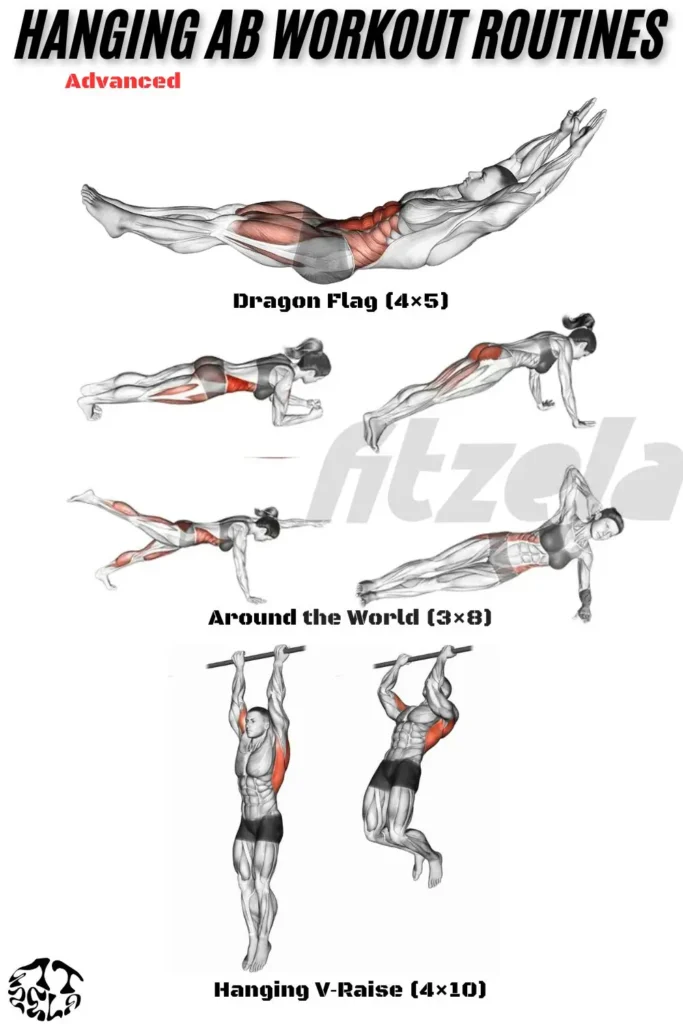
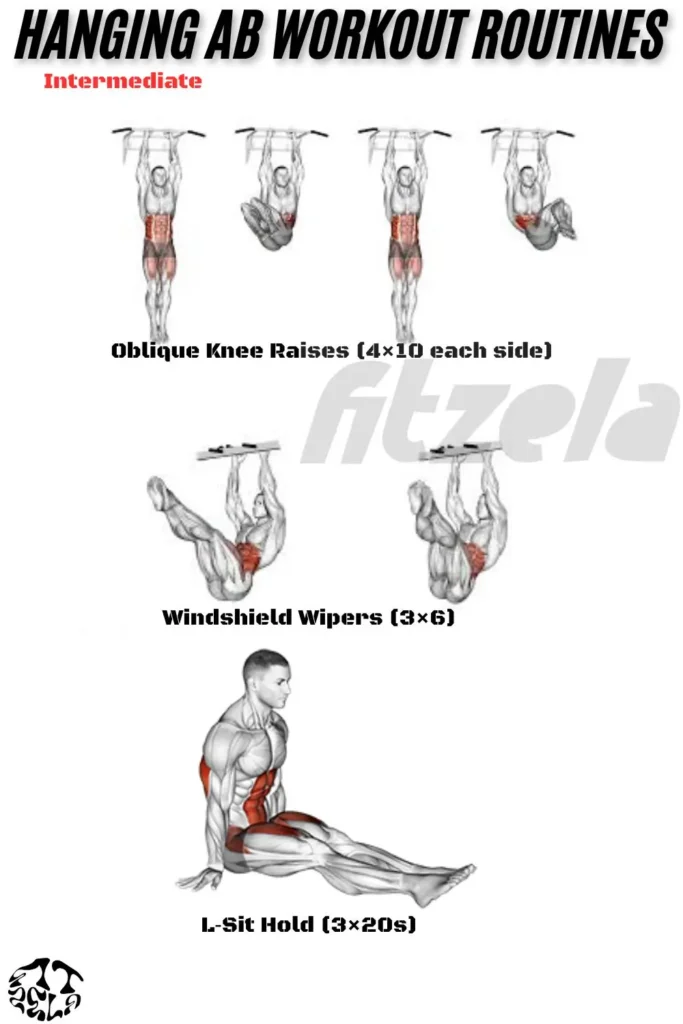
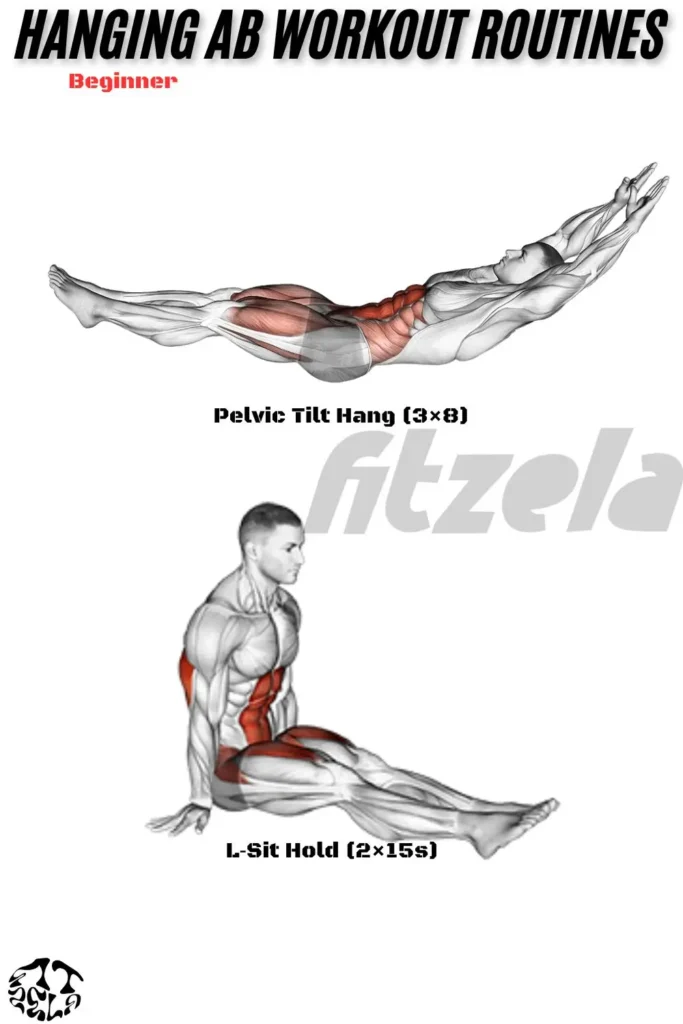
Warm‑Up: 5 minutes of dynamic stretches (see Warm‑Up Exercises).
Cool‑Down: 5 minutes of static stretching (cobra pose, child’s pose, hamstring stretch).
Safety Considerations
- Form First: Prioritize control over reps.
- Listen to Your Body: Rest if you feel sharp pain.
- Avoid Overtraining: Two to three ab‑focused sessions per week is optimal.
- Medical Clearance: Consult a professional if you have back, shoulder, or hip issues.
Troubleshooting Common Problems
- Grip Fatigue: Use chalk, gloves, or ab straps.
- Shoulder Pain: Check bar height, retract scapula before hanging.
- Lower Back Strain: Engage transverse abdominis and avoid hyperextension.
- Stuck on Progressions: Drop reps, focus on eccentric (lowering) phase.
Nutrition for Core Strength
Building a defined, strong core isn’t just about exercise—diet matters:
- Lean Proteins: Chicken, turkey, tofu to support muscle repair.
- Complex Carbs: Oats, quinoa, sweet potatoes for sustained energy.
- Healthy Fats: Avocado, nuts, olive oil for hormone balance.
- Hydration: Aim for 2–3 L of water daily to optimize performance.
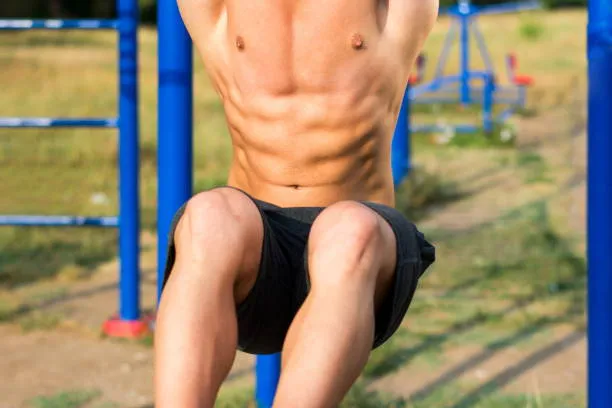
Conclusion
Ab pull up bar workouts deliver unmatched core engagement, functional strength, and convenience. From beginner knee raises to advanced windshield wipers, there’s a move for every level. Ready to transform your midsection? Try these routines, stay consistent, and watch your core strength soar.
Call to Action: Share your favorite pull‑up bar move or progress photos in the comments below!
FAQ
Q: Are hanging leg raises effective?
A: Absolutely. Hanging leg raises target both the upper and lower abs with increased activation compared to floor exercises, while also engaging hip flexors and improving grip strength.
Q: How often should I do these pull‑up bar ab exercises?
A: 2–3 times per week with at least 48 hours rest between sessions for optimal recovery.
Q: Can beginners start with full hangs?
A: Begin with knee raises or ab straps to build grip and core strength before progressing to full hangs.





